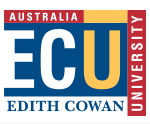Nickel in hierarchically structured nitrogen-doped graphene for robust and promoted degradation of antibiotics
Document Type
Journal Article
Publication Title
Journal of Cleaner Production
Publisher
Elsevier Ltd
School
School of Engineering
RAS ID
30569
Grant Number
ARC Numbers : DP150103026, LP160100035
Grant Link
http://purl.org/au-research/grants/arc/DP150103026 http://purl.org/au-research/grants/arc/LP160100035
Abstract
Nickel nanoparticles encapsulated in nitrogen-doped porous graphene (Ni@NPG) were synthesized through a one-pot method as a novel material for catalytic activation of persulfate (PS). The Ni@NPG catalysts were evaluated for adsorptive and catalytic removals of antibiotic sulfachloropyridazine (SCP) as an emerging pollutant and were found to exhibit excellent adsorption and catalysis with 100% SCP removal from water in only 30 min. Meanwhile, great stability and reusability can be achieved with satisfactory organic degradation after 4 successive runs. In addition, metal leaching was prohibited from the metal@carbon catalysts due to the protection of carbon walls. The influences of humid acid and inorganic anions (HCO 3 − , Cl − , Br − and H 2 PO 4 − ) on SCP degradation at various concentrations were further investigated and the present study shows that all these species promoted the SCP degradation at a low concentration whereas an inhibition effect occurred at higher concentrations due to radical quenching. Electron paramagnetic resonance (EPR) and quenching experiments reveal the PS activation mechanism involving generation of SO4 •− , • OH and • O2 − without singlet oxygen. The synergistic effect of radical and nonradical pathways played crucial roles during the SCP oxidation process.
DOI
10.1016/j.jclepro.2019.01.323
Access Rights
subscription content


Comments
Kang, J., Zhang, H., Duan, X., Sun, H., Tan, X., & Wang, S. (2019). Nickel in hierarchically structured nitrogen-doped graphene for robust and promoted degradation of antibiotics. Journal of Cleaner Production, 218, 202-211.
https://doi.org/10.1016/j.jclepro.2019.01.323